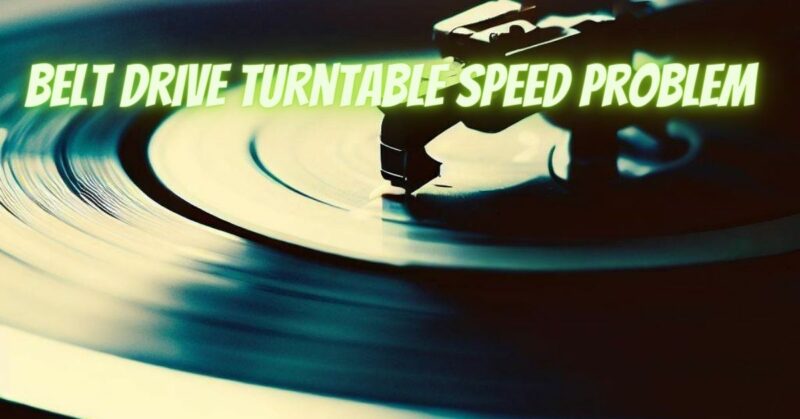Belt drive turntables offer a classic and reliable method of playing vinyl records. However, like any mechanical system, they can encounter speed-related issues over time. If you’re experiencing speed problems with your belt drive turntable, such as inconsistent rotation or speed variations, it’s essential to address them for optimal audio playback. In this article, we’ll guide you through troubleshooting steps to help diagnose and fix speed problems on your belt drive turntable.
- Check the Drive Belt: The drive belt connects the motor to the turntable’s platter, transferring power for rotation. Start by inspecting the drive belt for signs of wear, damage, or slackness. If the belt appears stretched, cracked, or loose, it may be the cause of speed problems. In such cases, refer to your turntable’s manual or manufacturer’s instructions on how to properly adjust or replace the drive belt.
- Verify Belt Alignment: Ensure that the drive belt is properly aligned on both the motor pulley and the turntable’s platter spindle. Misalignment can cause speed inconsistencies. Gently adjust the belt’s position to ensure it sits correctly on both pulleys.
- Clean the Pulley and Platter Spindle: Dirt, dust, or debris on the motor pulley or platter spindle can affect belt traction and result in speed problems. Use a soft cloth or a mild cleaning solution to carefully clean the pulley and spindle, ensuring they are free from any contaminants that could impact rotation speed.
- Lubricate the Spindle Bearing: The spindle bearing plays a crucial role in maintaining smooth rotation. Over time, it may require lubrication to reduce friction. Consult your turntable’s manual or manufacturer’s instructions for guidance on the appropriate lubricant to use. Apply a small amount of lubricant to the spindle bearing, ensuring not to overdo it, as excessive lubrication can cause other issues.
- Power Supply Considerations: Fluctuations in the power supply can affect the rotation speed of a belt drive turntable. Ensure that the turntable is connected to a stable power source and avoid sharing outlets with high-power devices that could cause voltage fluctuations. If possible, try plugging the turntable into a different power outlet to rule out any power-related issues.
- Seek Professional Assistance: If the above steps do not resolve the speed problems, it may be necessary to seek professional assistance. A qualified technician can diagnose and address more complex mechanical or electrical issues that may be affecting the turntable’s speed accuracy. They can also perform any necessary repairs or adjustments to restore optimal performance.
Conclusion:
Speed problems on a belt drive turntable can hinder your listening experience and compromise audio playback. By checking the drive belt, ensuring proper alignment, cleaning the pulley and spindle, lubricating the spindle bearing, and considering power supply stability, you can often address speed-related issues. However, if problems persist, it’s advisable to consult a professional technician who can diagnose and resolve any underlying mechanical or electrical problems. With a properly functioning belt drive turntable, you can enjoy your vinyl collection with accurate and consistent rotation speed, ensuring a high-quality audio experience.


